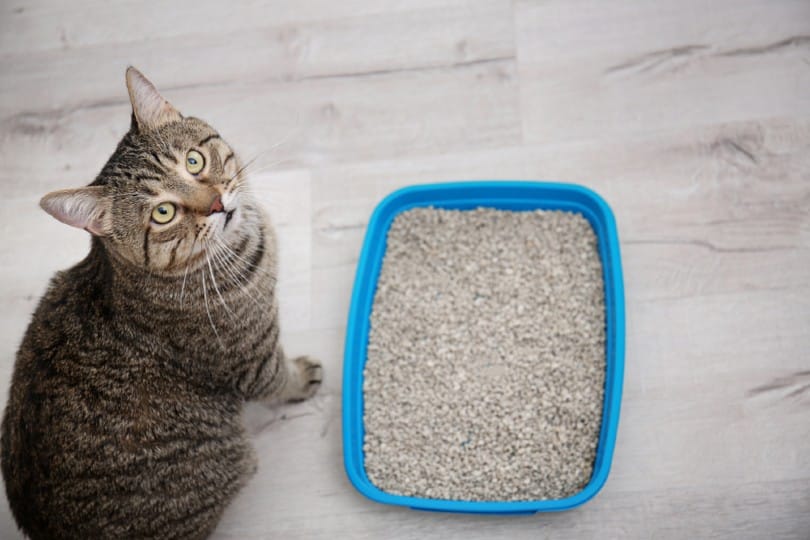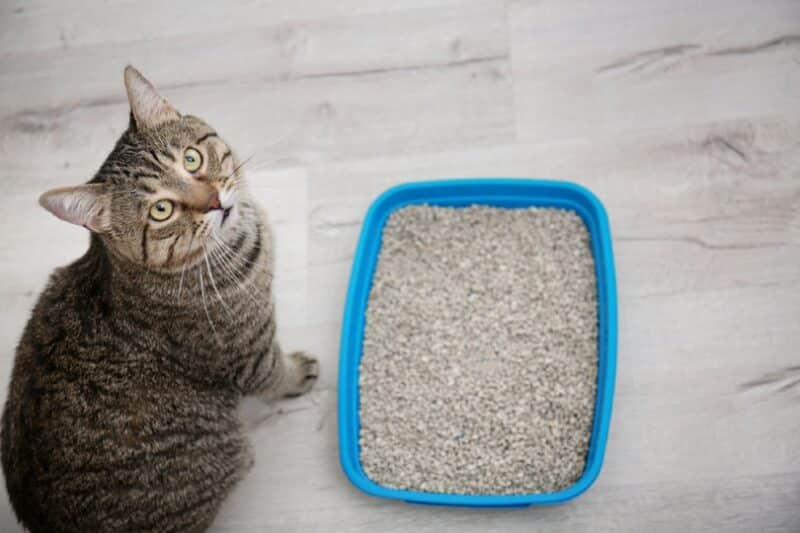Click to Skip Ahead
Discovering a little puddle of cat pee in front of the litter box can be frustrating, but your cat is not doing this on purpose! When we dig deeper into the reasons that cats pee in front of, instead of in, their litter boxes, they can be split into two categories: medical and behavioral.
It’s vital that you figure out which of these categories is the reason behind your cat’s pee habit and then figure out exactly what the problem is. This will give you the tools to solve the issue, so you will be cleaning up your cat’s pee from the only place that it should be—in that litter box!

Medical Problems
If your cat has peed in front of their litter box more than once, the first thing to do is to make an appointment with your vet. They will examine your cat, maybe arrange a few tests, and let you know if your cat is suffering from a medical condition. Your cat might need treatment to help them feel better. We’ve outlined the main medical problems that can cause cats to pee outside their litter box.
1. Bladder Stones
Bladder stones and crystals can build up and cause irritation. If left untreated, they can lead to a urethral blockage. Cats with bladder stones also often have a urinary tract infection (UTI). Your vet will need to carry out X-rays to see the size and number of stones or crystals. Once the bladder stones and UTI have been treated, your cat should go back to using their litter box normally.
Some small stones may dissolve if you switch your cat onto a specific prescription diet. Others will need surgical removal.
2. Endocrine Disease
This umbrella term covers a range of medical conditions, including diabetes and thyroid problems. If you’ve noticed that your cat is drinking more often, as well as peeing more in and out of their litter box, let your vet know.
Once your vet has run diagnostic tests to see exactly what metabolic disease your cat is suffering from, they’ll be able to draw up a treatment plan for them.
3. Chronic Kidney Disease
When a cat’s kidneys are not functioning normally due to chronic kidney disease, inappropriate urination is a common sign. Bring your cat to the vet for a complete check, including blood and urine samples.
Chronic kidney disease does not have a cure, but it is possible to slow its progression. Your veterinarian will guide you on the specific treatment steps according to the stage of the disease your cat is currently in. Additionally, your cat will have to follow a specialized diet and maintain its water intake.
4. Idiopathic Cystitis
Cystitis is a medical term for bladder inflammation, and idiopathic means the cause is unknown. Cats with idiopathic cystitis may have blood in the urine. Your vet will want to carry out a urine analysis to check that there are no bacterial infections or bladder stones present.
Idiopathic cystitis is often treated by changing your cat’s diet and adding environmental enrichment. Some cats will also need pain medications and, potentially, antianxiety medications.
5. Urinary Tract Infection
UTIs can occur on their own or in combination with any of the previously mentioned medical conditions. Bacteria in your cat’s urine cause inflammation and discomfort and can lead to pain and urethral blockages. UTIs are more common in male cats. If you notice your cat straining to pee but unable to, they may have a partial or complete obstruction of their urinary tract. Left untreated, a urinary obstruction can be fatal in 24–48 hours, so please bring your cat to the vet as soon as possible.
Some cats need surgery to clear a blockage, while others will recover with antibiotics. Prompt treatment is essential. Your vet may recommend a diet specifically designed for cats with urinary tract problems.
6. Arthritis
If your elderly cat has arthritis, they may be struggling to comfortably climb into a high-sided litter box. Their solution may simply be to do their business outside the litter box! If you know that your cat has arthritis or another joint condition, try to watch them as they go to use the litter box so you can check if they’re struggling.
Switch to a litter box with one lowered edge or a shallower box. Both will be easier and more comfortable for your cat to climb into. Your vet may also recommend joint supplements or pain medication, depending on the severity of your cat’s joint issues.
Behavioral Reasons
If your cat has visited the vet and been cleared of any medical conditions, then the next step is to consider behavioral reasons for them peeing in front of their litter box.
7. Dirty Litter Box
Cats are particular creatures, so if you’ve waited longer than usual to clean out your cat’s litter box, they may simply decide not to use it. If you have multiple cats and are out of the house for a good portion of the day, make sure there are enough litter boxes spread out around the house for them to use.
Make sure your cat’s litter box is cleaned out as often as possible. Self-cleaning litter boxes are also a good idea, but make sure to give your cat time to get used to it before you turn it on, and always offer a standard litter box as well.
8. Stale Urine Smells
Once your cat has peed outside the box, the smell of stale urine can remain long after you think that you’ve cleaned it up. Simple soap or disinfectant isn’t enough to remove the smell for your cat, so they will continue to pee in the same spot because it smells like them!
Thoroughly clean any pee stains with an enzymatic cleaner designed to remove cat urine. This breaks down the compounds within the pee that your cat can smell but you can’t.
- ADVANCED ENZYMATIC CLEANER - Penetrates the most stubborn smells and stains at the deepest molecular...
- FOR ANY MESS, ON ANY SURFACE - This pet odor eliminator cleans your carpets, floors, furniture,...
- FRESH, NATURAL ODOR - Our unique formulation doesn't rely on dangerous or unpleasant chemical...
The Hepper Advanced Bio-Enzyme Pet Stain & Odor Eliminator Spray is our favorite enzyme cleaner out there. It permanently removes even the very worst kitty stains and smells, leaving your home fresh and clean! Click here to learn more about this amazing product and get yourself a bottle.
At Catster, we’ve admired Hepper for many years, and decided to take a controlling ownership interest so that we could benefit from the outstanding products of this cool cat company!
9. Stress or Anxiety
Your cat might pretend that they’re big and brave, but they’re really a sensitive soul that can become stressed pretty easily. If you’ve changed your cat’s environment, moved the furniture around, brought a new cat home, or even have an extended house guest, these can all be enough to stress your cat out.
Speak to your vet if you suspect that your cat is stressed. You can use a pheromone diffuser to make your cat feel more secure or make sure your cat has a “zone” of the house that is solely theirs. Of course, make sure this contains a clean litter box!
10. Difficulty Accessing the Litter Box
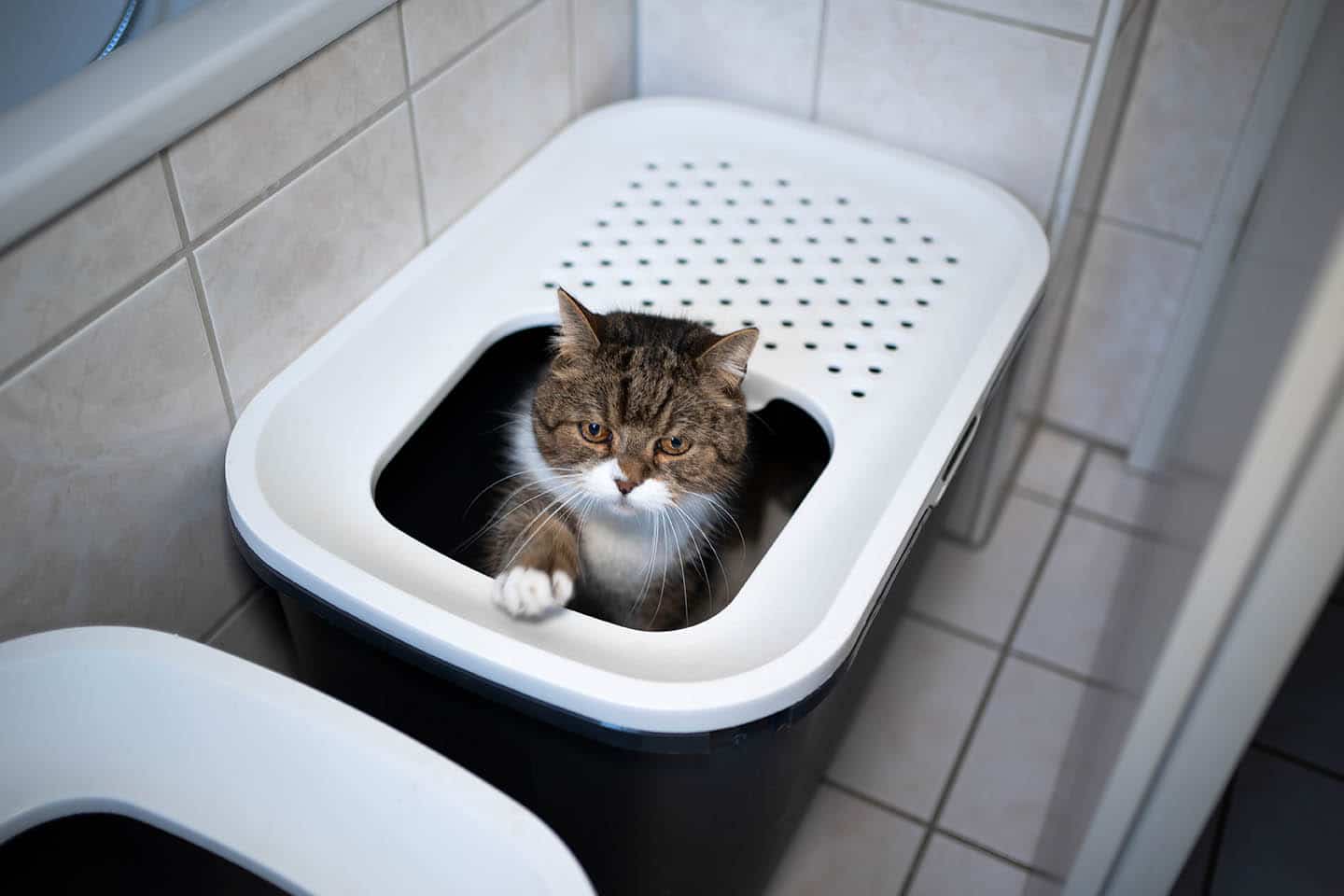
If your cat’s litter box is difficult for them to climb in and out of, they may simply decide to pee next to the box. This might be close enough in their eyes! If your cat is old and stiff and the litter box has high sides, they may find it too hard to access. The same goes for kittens that may struggle to access a taller-than-average litter box. Some cats don’t like covered litter boxes, while others prefer them.
Switch to a litter box that’s easier for your cat to climb in and out of. You may need to experiment to find the best litter box for your cat.
11. Litter Box Too Small
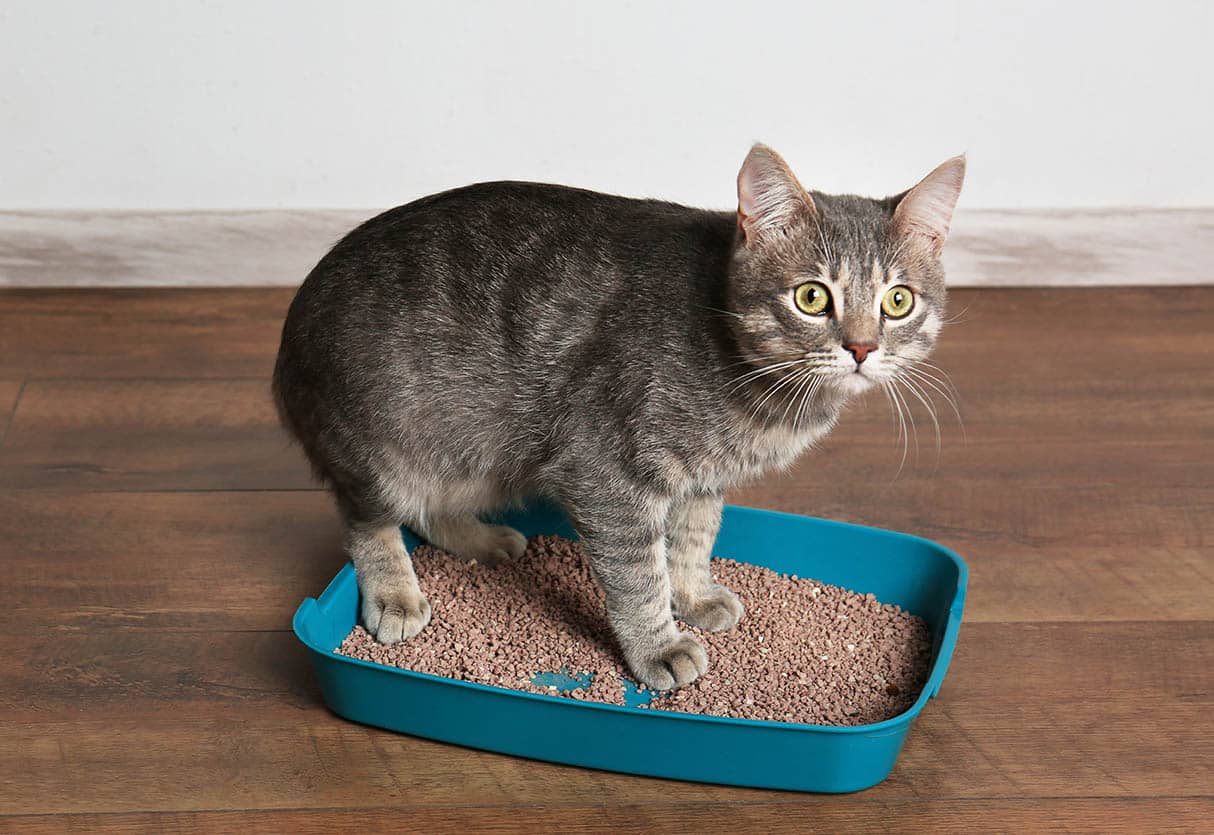
If you have a large cat and a regular-sized litter box, it might just be too small for them. They may be climbing into the box and attempting to do their business in there, only to end up doing it over the edge instead!
Buy a larger litter box.
12. Litter Box in the Wrong Place
You might think that the best place for your cat’s litter box is in the hallway so you can easily clean it out, but your cat probably has other ideas. Cats prefer a quiet location for their litter box, where they won’t get bothered by the dog or kids running around.
Place your cat’s litter box somewhere quiet but accessible. You may need to place a few litter boxes around the house and make note of which location your cat seems to prefer.
13. Wrong Type of Litter
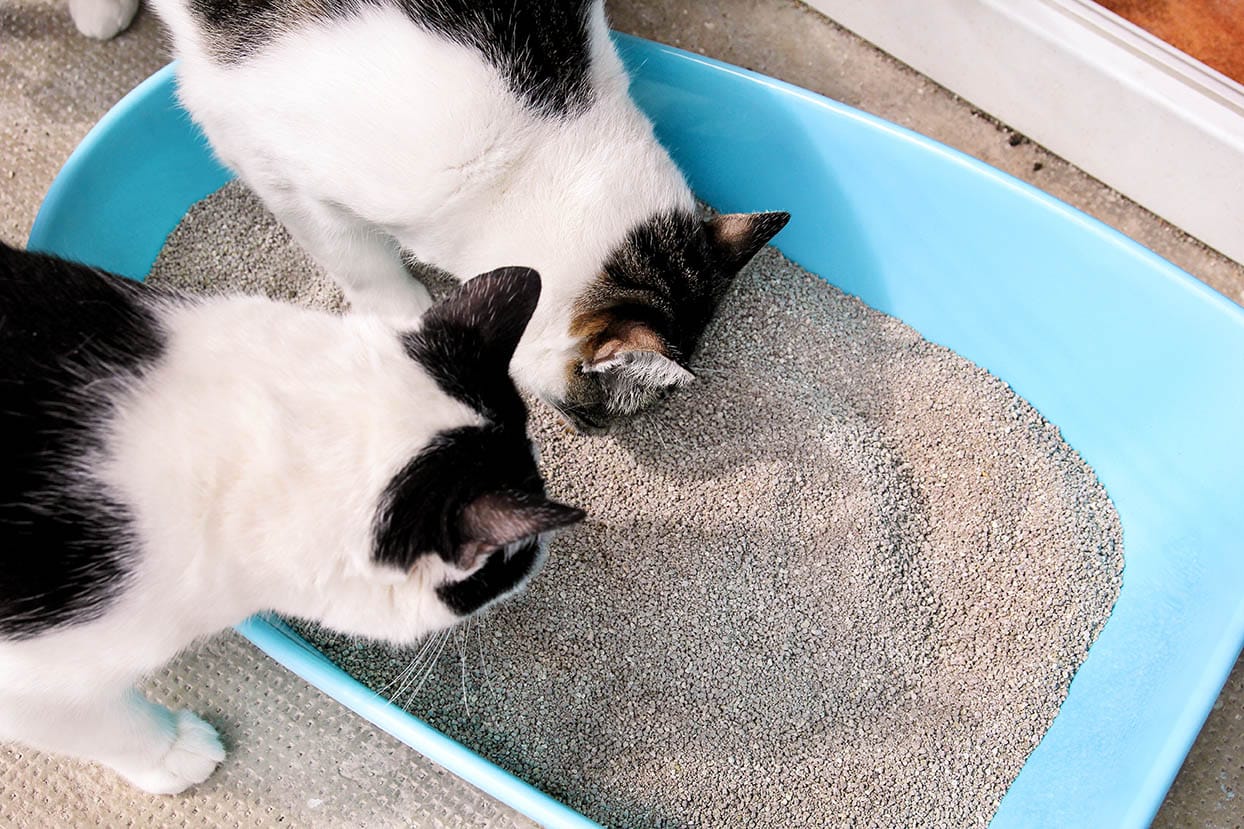
If you’ve recently changed brands or types of cat litter, this may be the issue. Cats are creatures of habit, and some don’t adapt well to change. Some cats dislike the texture or smell of particular litters and simply won’t use the litter box if they don’t like the litter.
Switch back to the original brand of litter, or try a few boxes around the house with different brands, including an unscented version. See which one your cat prefers. If you have multiple cats, bear in mind that they may prefer different litters!
14. Not Enough Litter Boxes
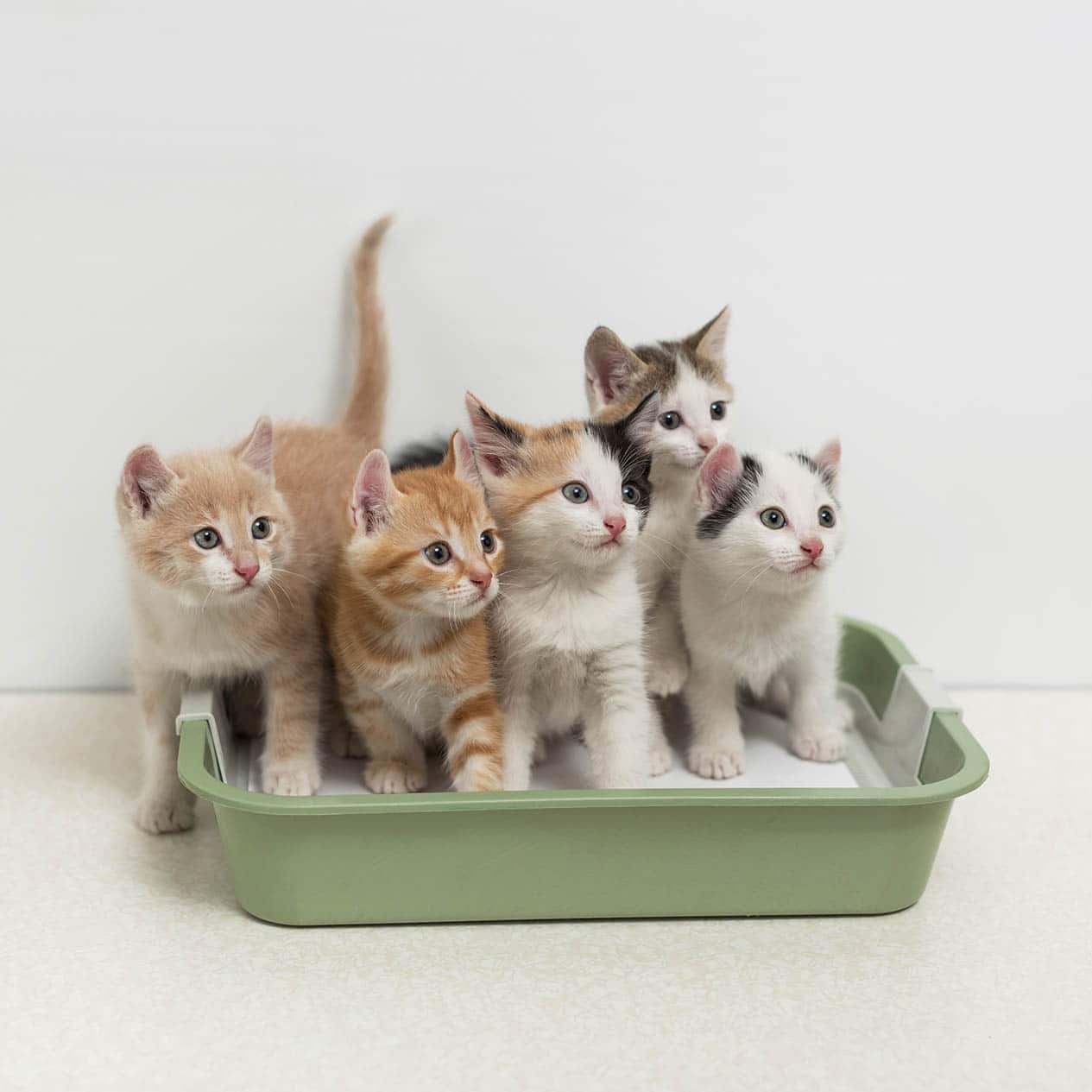
If you have multiple cats and some of them are territorial, you may find that not all your cats want to use the same litter box. This may lead to certain cats doing their business close to but outside of the litter box.
Add more litter boxes. We recommend one box per cat and one spare. This way, none of your cats have to compete for resources, and there will always be an unoccupied litter box when they want one. Make sure to spread the litter boxes around the house, including on all levels.
See also:
- Pros & Cons of Using Cat Diapers: Is It Right for Your Cat?
- Cat Peeing Over the Edge of the Litter Box? Reasons & Solutions
Featured Image Credit: New Africa, Shutterstock

